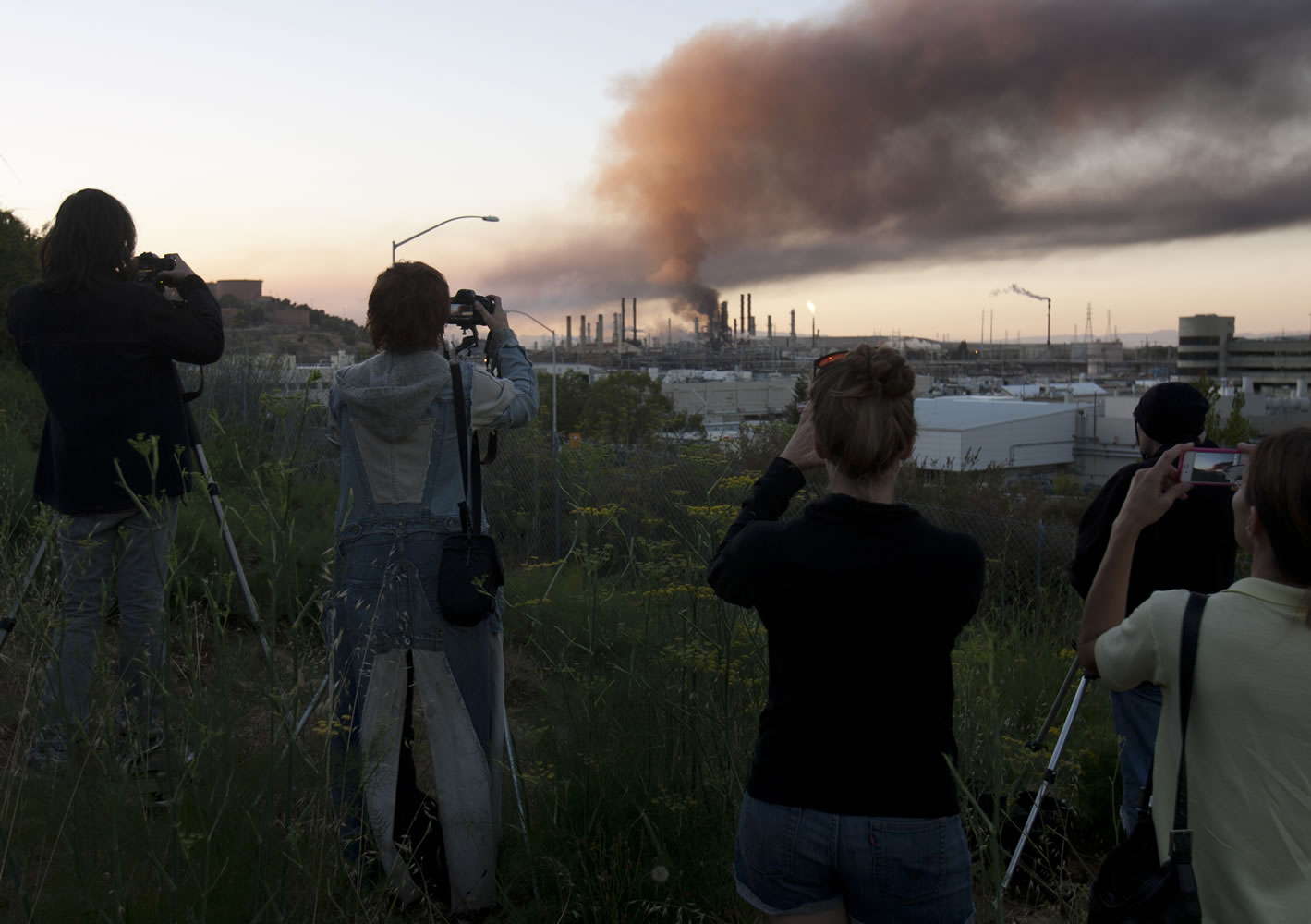RICHMOND, Calif. — Chevron and environmental groups are poised for an epic clash over the repair of the oil giant’s century-old refinery in the wake of the Aug. 6 fire there.
The conflict could delay a return to full production at the refinery and prolong a period of high gasoline prices for Northern California motorists.
Environmentalists have seized on the fire damage as an opportunity to force Chevron to update the huge refinery, one of the Bay Area’s biggest polluters, to make it safer and cleaner. But Chevron, eager to preserve exceptions the aging refinery enjoys from compliance with the 1970 Clean Air Act, appears ready to resist a major update.
“This is our most opportune time to put pressure on Chevron,” said Andres Soto, an activist with Communities for a Better Environment. “We definitely want a complete modernization of the refinery.”
A spokesman for San Ramon, Calif.-based Chevron, though, expressed skepticism about the environmental groups’ motives. He said the same environmental and community groups now calling for modernization of the refinery have in the past used litigation and other tactics to delay upgrades that, the company says, would have made the refinery more efficient and reliable while reducing emissions.
Spokesman Justin Higgs said the groups’ actions “continue to impede improvements, stymie job creation and cost Richmond much-needed revenue.”
Community activists respond that they sued Chevron in 2010 because it had not undertaken a sufficient environmental review. They won a court order forcing the oil giant to produce a new environmental impact report. Chevron is preparing a report that should be completed by 2013.
This time around, activists are pressuring Chevron not merely to replace the crude oil distillery unit destroyed in the fire but to replace aging equipment, pipes, devices and other gear with state-of-the-art, modern components. They want a thorough probe of the fire and rigorous oversight of the repairs and upgrades.
“Modernize this damn old refinery,” said Denny Larson, a representative of El Cerrito, Calif.-based Global Community Monitor, which provides support for community groups in their activities.
Chevron’s 110-year-old Richmond plant is one of numerous aging U.S. refineries that were largely exempted from the 1970 Clean Air Act because their already creaky equipment wouldn’t have passed muster under the rules established by that law.
To avoid being forced to comply with today’s Clean Air Act rules, refinery operators have typically avoided major expansions. Instead, they have cobbled together modifications and repairs in fits and starts as components wore out or broke down.
“The activists sense this fire has created the opening to push for a modern plant,” said Dara O’Rourke, an associate professor of environmental policy at the University of California at Berkeley. “This Richmond refinery is really old. At some point you have to bring it up to 2012 standards.”
Local environmental groups have the backing of the 1.4 million-member Sierra Club, which has called for a thorough investigation of the fire and a careful monitoring of repairs.
“It’s time to move beyond oil,” the Sierra Club wrote in an e-mail to its members. “Let your friends know that you’re sick of Big Oil’s spin machine.”
At full production, the Richmond plant has the capacity to process 245,000 barrels of oil per day. Chevron won’t say how much production has been reduced by the fire, but Bob van der Valk, a Montana-based fuel price analyst, estimates that the refinery is running at about 60 percent capacity.
Richmond City Manager Bill Lindsay said it “could be several months” before full production is restored at the refinery, suggesting that gas prices are likely to remain high in Northern California for the foreseeable future. Since the fire, gas prices in the Bay Area have spiked 26 cents, or 6.8 percent, and now are at an average $4.15 a gallon.
“The Richmond refinery is important to Chevron’s entire West Coast system,” said Denton Cinquegrana, an analyst with the Oil Price Information Survey. “Chevron uses the refinery not only to supply the Bay Area but the entire Pacific Northwest.”



